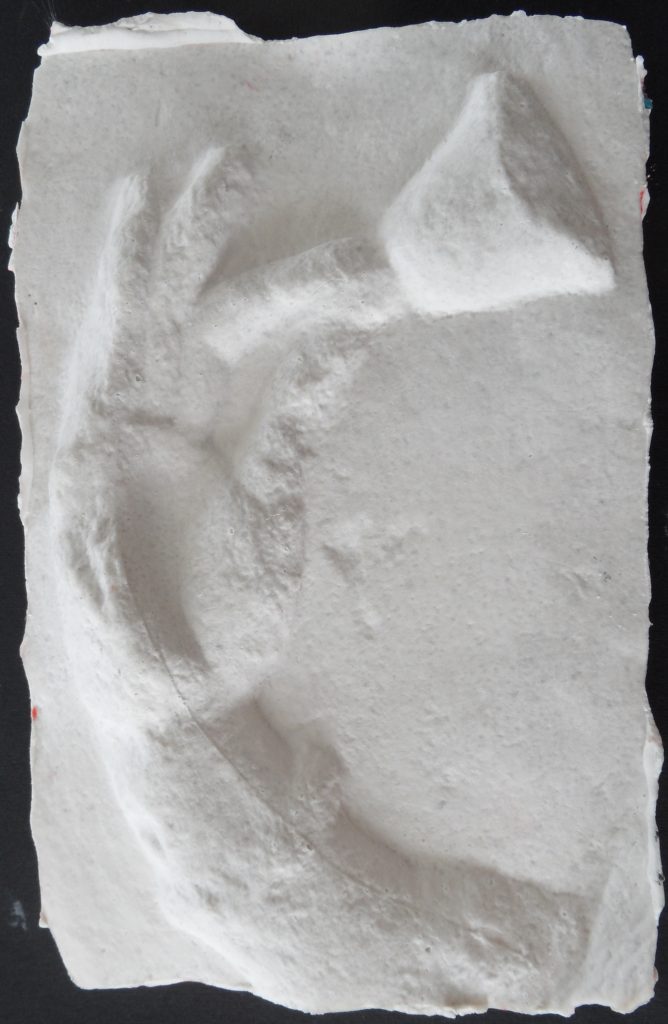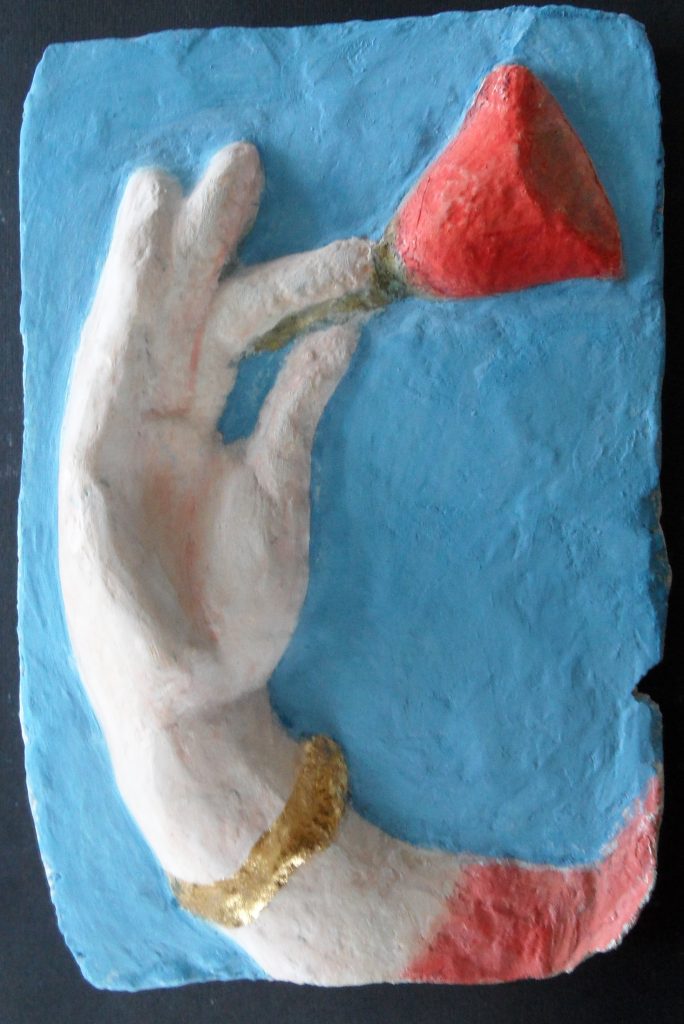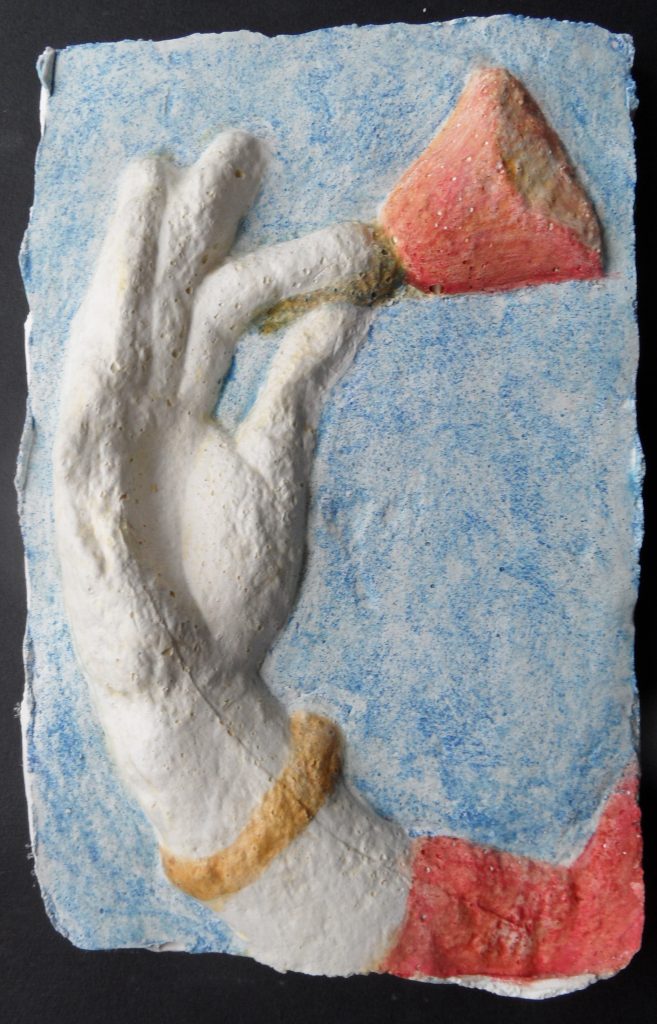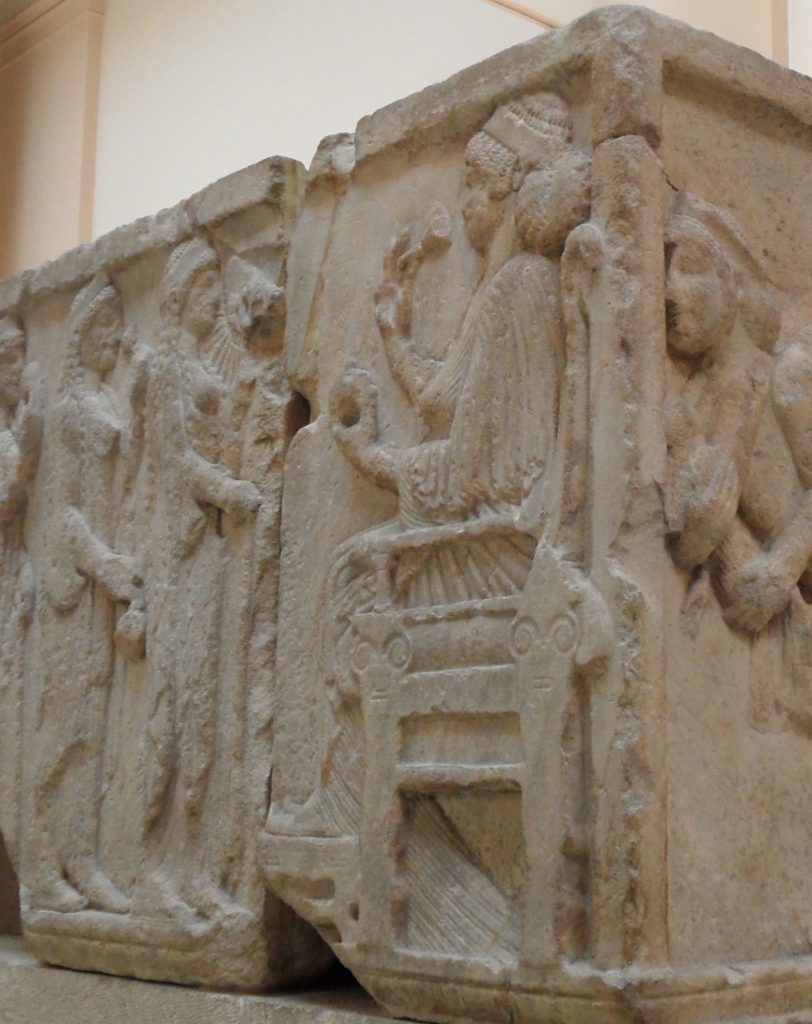Paint on white marble, a research project.
What do we really know about the polychromy on antique marble statuary? Were statues and reliefs actually painted, and if so, what materials paints were used? These were some questions posed in the present project, which concerns gypsum copies of the sculpted decoration on Kybernis Monument, also known as the Harpy Tomb. The project was carried out in 2013.
The so called Harpy Tomb in Xantos in Lycia has been dated to the late archaic/early classical Greek period. There is a plaster copy of the monument’s west side in the Historic Museum of Lund, and this miscoloured copy was used to make a form which would permit making a copy in a harder material, more like marble.
Experiments began by creating a form of a detail, a hand holding a pomegranate. Various mixtures of plaster were tested, until one was found suitable. The casts were painted with different kinds of paint, such as tempera and wax paint. Historical pigments were used. Two new copies of the west side were finally made, and these were painted in two manners: one with thick layers of paint and the other one only lightly coloured. The painted copies were brought to the Museum in Lund and part of the new exhibition of objects from the Antique.
The details of the hand holding a pomegranate shows the material unpainted and then two versions of how it might have been painted in Antiquity.




